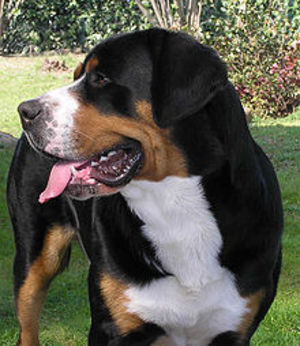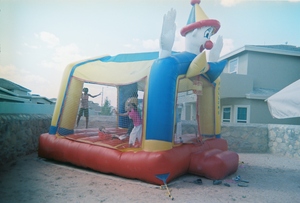The Greater Swiss Mountain Dog is more than just a Bernese Mountain Dog with short hair. The two breeds to resemble each other, but the Greater Swiss Mountain Dog is much larger and heavier than the Bernese or the other two breeds developed in the mountains of Switzerland – the Appenzeller and the Entlebucher. The “Swissy” is a highly intelligent dog that has caught on in many countries of the world, not just Switzerland.
Origins
Another name given to this breed is the Great Swiss Cattle Dog, which gives some idea of why the breed was developed. According to D. Caroline Colie, Ph. D. in “Encyclopedia of Dog Breeds” (Barron’s; 2005), when the Romans passed through Switzerland, they left some of their Mastiffs and Molossan dogs behind. She also points out that some people believe that the Phoenicians brought Mastiffs and Molossan dogs to Spain around 1100 BCE and Spanish traders then brought the dogs to Switzerland.
Whatever the race of their masters, giant Mastiff-type dogs were selected by the livestock owners of the Swiss mountains to guard herds, flocks and property. They were also bred to be strong enough to pull loads, like a pony. As a result, these are dogs that are very protective of their families and territory but can be aggressive toward strangers – especially strange dogs. However, they can be trained to accept strangers.
The first Greater Swiss Mountain Dog went to a dog show in 1908 and was entered in the Bernese class. A Professor Helm was visiting the show, saw this dog and knew that this was a different breed entirely from the Bernese.
General Appearance
In coloration, the Greater Swiss Mountain Dog does certainly look like a short-haired Bernese. They have mostly black bodies with fringes with rust-red and white. The white is usually on the neck, chest, belly and feet. D. Caroline Colie points out that other colors can pop up in the breed, but they can’t be either shown or registered. Like the Bernese, they also have rusty-red eyebrow patches and the dog is slightly longer than tall.
However, these are more massive dogs in comparison to a Burnese. Although some Greater Swiss Mountain Dogs can only tip the scales at 80 pounds, the average weight is 125 pounds. Some male dogs have been known to weigh 140 pounds. They have floppy ears, a gently curving tail and big feet that are in proportion to the rest of the dog.
Special Considerations
“Swissies” were bred to be active. They need regular exercise or they can get so bored that they will find things to do. Since they are a herding breed, they may round up people from time to time. They can quickly learn to herd any groups of animals, including deer, poultry, llamas or children.
They should have be brushed at least once a week and only bathed when they need it. Some dogs seem to keep themselves far cleaner than people.
According to “ASPCA Complete Guide to Dogs” (Chronicle Books; 1999), Greater Swiss Mountain Dogs are prone to many health issues common to giant breed dogs, including bloat, panostetisis, esophagus problems and hip dysplasia. But, on average, they can live for 10 – 13 years.
References:
“Encyclopedia of Dog Breeds.” D. Caroline Colie, Ph. D. Barron’s; 2005.
“ASPCA Complete Guide to Dogs.” Sheldon L. Gerstenfeld, VMD. Chronicle Books; 1999.
Greater Swiss Mountain Dog Club of America. “Breed Information.” http://gsmdca.homestead.com/BreedInformation/BreedInformation2.html





